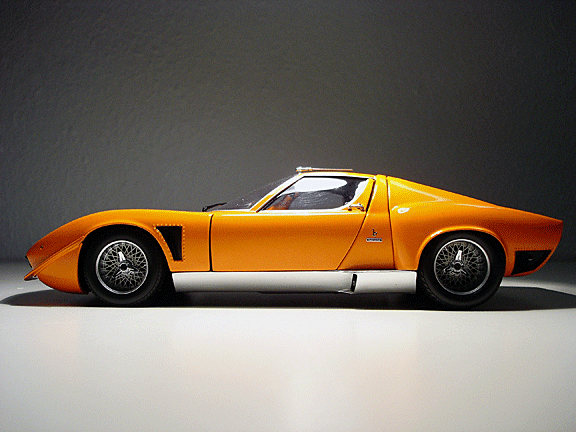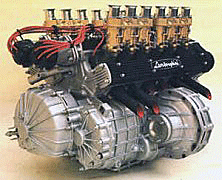
 The Lamborghini Miura was a stunning blend. Combining the best of all-out endurance racers with street-ready sports car usability, it shocked the automotive world and made history when it was introduced for 1966. In the process, the Miura triggered a flood of exotic, lusty mid-engine machines that continues to this day.
The Lamborghini Miura was a stunning blend. Combining the best of all-out endurance racers with street-ready sports car usability, it shocked the automotive world and made history when it was introduced for 1966. In the process, the Miura triggered a flood of exotic, lusty mid-engine machines that continues to this day.
But for all the Miura’s historic significance and its obvious race-car underpinnings, Lamborghini never fielded a competition version of it. Of course, plenty of people within the company at the time hoped they would. Foremost among them was Lamborghini’s chief development driver Bob Wallace. He had plenty of ideas for improving the Miura, and from the beginning he’d been championing the idea of racing it.
Working against Wallace, however, was the company’s meager finances. The former tractor manufacturer had built its first production automobile just three years before the Miura’s introduction. Nonetheless, the idea of a racing version bubbled around the company from time to time, eventually culminating in the Jota, a great ‘what-if’ car that ended up being the ultimate Miura.
The Jota story began in 1970, when Wallace began building a company-funded, Miura-based ‘toy’ in the Lamborghini shop. Its suspension was modified to accommodate wide wheels and tires, the front-mounted fuel tank was replaced by one in each door sill, and the engine got extensive modifications that increased output of the Miura S engine by 48 hp, to 418. Inside, the interior was left completely stripped, and the floor was made of aluminum instead of steel. The exterior of the car car differed from stock Miuras in its broader fenders, prominent front spoiler, air vents behind the front wheel wells, and fixed instead of pop-up headlights.
It was a thrilling machine, even more so than the already exciting ‘standard’ Miura. Wallace thoroughly enjoyed his creation, but the fun wouldn’t last long. Lamborghini simply couldn’t afford to have assets tied up in what was considered an esoteric experiment, and they quickly put the car up for sale.
According to Wallace, the Jota was purchased by a rich industrialist in Brescia. Shortly thereafter, the wealthy owner’s mechanic destroyed the car in a fiery crash. And thus in one quick flash ended the short, bright life of the ultimate Miura.
 Fortunately, supercar fans can draw some consolation from the fact that the Jota legend was perpetuated in a number of Miura-based replicas—several of which were reportedly built by Lamborghini itself at the request of customers.
Fortunately, supercar fans can draw some consolation from the fact that the Jota legend was perpetuated in a number of Miura-based replicas—several of which were reportedly built by Lamborghini itself at the request of customers.